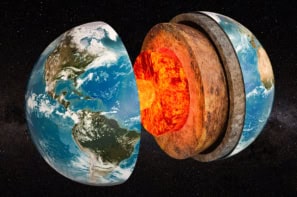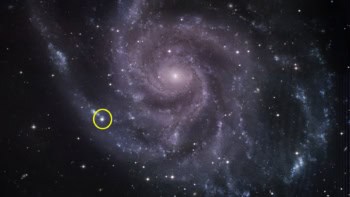
Scientists in the US say they have found a dramatic new electrical-discharge mechanism that could explain how thunderstorms can produce flashes of gamma radiation. Called “dark lightning”, the effect is silent, invisible to the eye and a potential threat to aeroplane passengers – at least according to the researchers’ models. This is because such lightning has the potential to produce intense terrestrial gamma-ray flashes (TGFs) and could deliver a radiation dose equal to a full-body X-ray-tomography (CT) scan to nearby air travellers.
TGFs are extremely bright pulses of gamma rays emanating from the Earth’s atmosphere. They last just a few tenths of a millisecond but are capable of temporarily blinding satellite-based instruments located hundreds of kilometres away. Scientists have known about TGFs since the early 1990s, when they were discovered by accident by instruments designed to measure gamma rays from distant astrophysical sources such as supernovae and black holes.
‘Garden-variety thunderstorms’
For a long time, no one could work out where TGFs were coming from. “It was logical to think that if we can see them from space, they must come from the top of the atmosphere,” explains physicist and lightning expert Joseph Dwyer of the Florida Institute of Technology, who led this latest work. It turns out that was wrong: “We now know that they come from deep within the atmosphere, from garden-variety thunderstorms,” he explains.
All types of thunderstorm, large or small, appear to produce TGFs, with an approximate frequency of one for every thousand bolts of conventional lightning. But until very recently, it was not at all clear how they were doing it. Now Dwyer and colleagues have come up with a physics-based model that offers an explanation and quantifies the potential threat that TGFs pose to aircraft, which routinely fly at similar altitudes.
Floating-particle accelerator
In a storm cloud, rapidly rising swells of hot air force ice and water particles to rub against one another, producing swathes of ions and establishing a huge potential difference between the top (positively charged) and middle of the cloud (negatively charged). Lightning is thought to occur when the insulating layer of air between the two charge centres suddenly breaks down. But as the storm charges up, the strong electric field also transforms the cloud into a giant floating-particle accelerator. Electrons accelerated to almost the speed of light crash into air molecules, producing yet more fast-moving electrons in an avalanche effect.
At relativistic speeds, the electrons emit Bremsstrahlung gamma rays, some of which disintegrate into an electron and a positron. The newly created electrons join the rest in surging upwards and producing gamma rays, while the positrons plunge downwards towards the negative centre of the storm cloud, glancing off air molecules as they go and initiating countless more cascades of electrons. “You create this feedback loop: the positrons make the electrons, the electrons make the positrons,” explains Dwyer. “So you get sort of an avalanche of avalanches.”
Explosive yet invisible
The explosive cascade produces around 1017 electrons in just a few tenths of a millisecond – spewing out gamma rays all the while – at which point the number of charged particles is so great that the thunderstorm’s electrical field collapses and it discharges rapidly and invisibly. The electrical currents produced by these beams of high-energy electrons are comparable to those produced by conventional lightning – tens of thousands of amps in magnitude.
The Florida Tech model shows promise because not only does it predict TGFs with the same frequency and pulse structure as those observed by satellites, it also predicts that TGFs should have large radio bursts associated with them – a phenomenon routinely measured by terrestrial lightning-measurement networks.
The team used its model to calculate the radiation dose to a person aboard a plane in a storm. It found that near the top of a storm, the dose is equal to about 10 chest X-rays – the dose we receive from natural background sources over the course of a year. But nearer the centre of the storm, the dose could be “about 10 times larger, comparable to some of the largest doses received during medical procedures and roughly equal to a full-body CT scan,” according to Dwyer.
Sizable dose of radiation
“On rare occasions…it may be possible that hundreds of people, without knowing it, may be simultaneously receiving a sizable dose of radiation from dark lightning,” says Dwyer, but stresses that the risk is not one to be overly concerned about – pilots already do their utmost to avoid and circumnavigate thunderstorms. “You’d have to be inside the thunderstorm [to be at risk], and not only inside but in the worst part of the storm at precisely the wrong time.”
“This sort of research is obviously relevant, as these are phenomena occurring just above us,” says Nikolai Østgaard, a physicist from the University of Bergen, Norway, who was not involved in the research. “But we need more observations…All measurements from space of these TGFs have been made by instruments designed for other purposes, but now there are several planned missions especially designed to detect TGFs and optical lighting.”
David Smith, of the University of California, Santa Cruz, finds the theoretical work “compelling and beautiful”. But, he cautions, “There are competing ideas for how TGFs are produced, that haven’t been ruled out, and in these models the TGF is never ‘dark’ – it requires an ordinary lighting flash to take place, and follows it closely.” Smith is soon set to team up with Dwyer and colleagues to fly the ADELE gamma-ray detector around hurricanes on the unmanned Global Hawk aircraft.
The research was described on 10 April at a meeting of the European Geosciences Union in Vienna, Austria.



